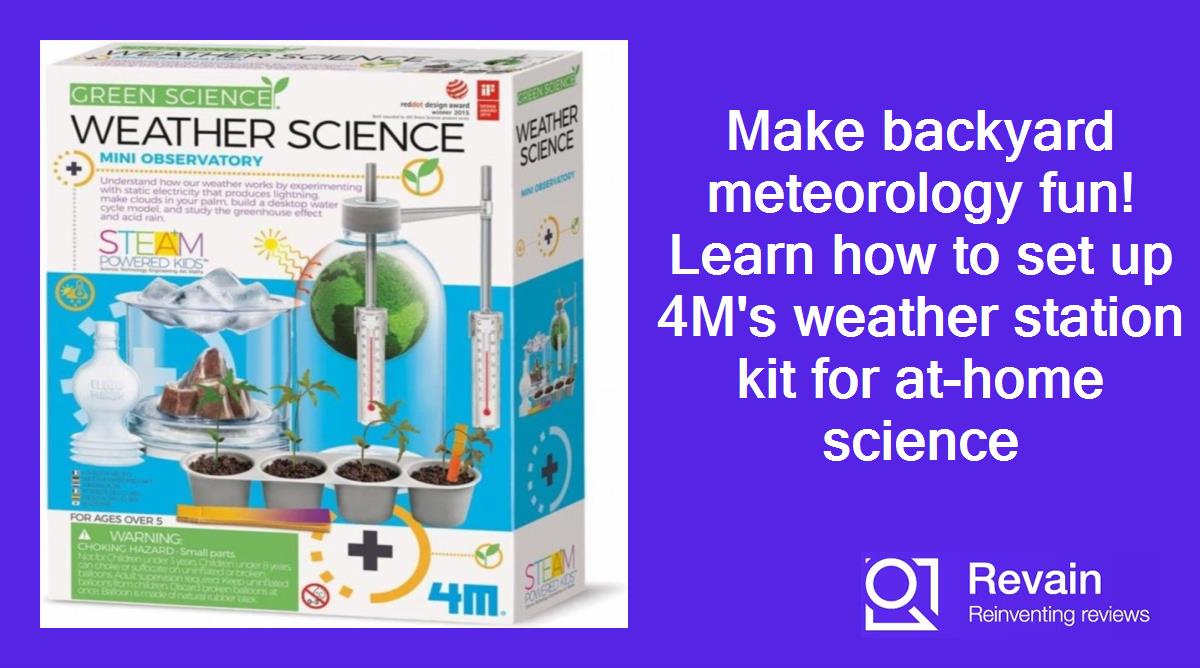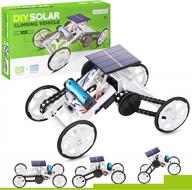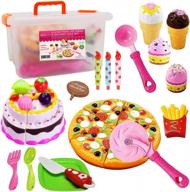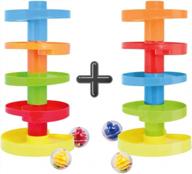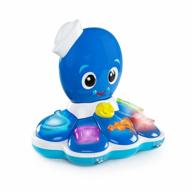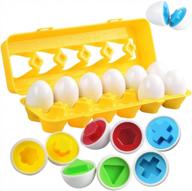How to set up the weather station?
Setting up a weather station with the 4M kit is easy and fun! Here are the step-by-step instructions to get your weather station running in no time.
What's in the box
- Anemometer (wind speed meter)
- Wind vane
- Rain gauge
- Thermometer
- Hygrometer (humidity meter)
- Barometer
- Compass
- Tools and fasteners
- Instruction manual
Choosing a location
First, pick an outdoor location to set up your weather station. Choose an open area away from trees and buildings so measurements aren't blocked or influenced. Mount the instruments at least 5 feet off the ground for better data collection.
Assemble the stand
Use the provided tools and fasteners to assemble the stand per the manual's instructions. Make sure the stand is stable once assembled.
Mount the instruments
Attach each instrument to the stand using the provided clamps and screws. The ideal order is:
- Wind vane
- Anemometer
- Rain gauge
- Thermometer and hygrometer
- Barometer
- Compass
Point the wind vane north and make sure instruments are mounted securely and won't shake or sway.
Set up the display
Take the display console indoors and insert batteries. Place it where you can easily view the data. Connect sensors using the provided wires.
Take initial readings
Read each instrument to get baseline data. Record this data along with the date and time. Now your weather station is up and running! Take daily measurements at the same times each day.
With this high-quality 4M kit, you'll be able to monitor wind speed, rainfall, temperature, humidity, air pressure and more. Have fun tracking weather patterns in your area!
Similar products
How to read the thermometer and hygrometer?
The 4M Weather Station kit comes with a high-quality thermometer for measuring temperature and a hygrometer for measuring humidity. Here are some tips for using these instruments:
Reading the thermometer
The thermometer is marked with both Celsius and Fahrenheit units. To take a temperature reading:
- Make sure the thermometer is mounted in the shade away from direct sunlight.
- Read the small silver indicator line - this shows the current temperature.
- Read the number on the scale that lines up with the indicator line.
- Record the temperature in your weather log along with the date, time, and any observations.
Reading the hygrometer
The hygrometer measures relative humidity on a scale of 0-100%. To use it:
- Look at the colored indicator needle - it points to the current relative humidity.
- Read the number on the scale that matches up with the needle position.
- Record the humidity percentage in your log along with the date, time, and observations.
Taking accurate readings
Follow these tips for best results:
- Take readings at the same times each day for consistency.
- Make sure instruments are mounted in shaded, well-ventilated areas.
- Give sensors time to adjust to current conditions before recording data.
- Check your readings against professional weather stations in your area.
- Replace batteries when low to maintain accuracy.
With some practice, you'll get the hang of using the thermometer and hygrometer! Recording temperature and humidity data can reveal interesting weather patterns over time.
How to use the anemometer to measure wind speed?
The anemometer is a useful instrument for measuring wind speed. Here are some tips on using the 4M Weather Station anemometer to collect wind data:
Mounting the anemometer
Mount the anemometer near the top of the weather station stand. Make sure it spins freely without obstructions. The cups should be oriented parallel to the ground when there is no wind.
Reading wind speed
- Count the number of revolutions the anemometer makes over a set time period (e.g. 15 seconds). Use a timer for accuracy.
- Multiply the number of turns by 4 to calculate revolutions per minute (RPM).
- Use the conversion chart in the instruction manual to match RPM to wind speed in miles per hour (mph) or kilometers per hour (km/h).
- Record the wind speed, date, time, and observational notes in your weather log.
Tips for accurate readings
- Pick a time range between 10-15 seconds for counting rotations.
- Use a stopwatch or timer app to precisely time readings.
- Take measurements at the same height each time.
- Collect data over an extended time period for revealing wind patterns.
- Compare your readings to other weather stations in the area.
Using wind speed data
Tracking wind speed over time can reveal daily and seasonal wind patterns in your area. This data can help with:
- Monitoring potential weather events like storms.
- Determining optimal conditions for wind-powered devices.
- Assessing ventilation needs for buildings.
- Understanding local wind resources and risks.
The 4M anemometer provides an easy yet effective way to collect useful wind speed data for weather experiments and research.
How to track weather patterns with the barometer?
A barometer measures air pressure and can reveal insight into developing weather patterns. Here are some tips for tracking weather with the 4M Weather Station barometer:
Understand air pressure
The barometer measures station air pressure in hectopascals (hPa) or millibars (mb). Pressure changes indicate different weather conditions:
- High pressure - Fair, sunny weather
- Low pressure - Increased chance of storms and precipitation
Take regular readings
- Check the barometer 2-3 times daily at consistent intervals.
- Record the pressure data along with time, date and observations.
- Note the pressure trend - rising, falling or steady.
Watch for significant changes
Pressure changes under normal conditions are gradual. Look for:
- Rapid rises over a few hours - Indicator of improving weather
- Steep drops over a few hours - Indicator of approaching storms
Compare to forecasts
Check official and local forecasts to compare to your readings. Calibrate your barometer as needed to match forecasts.
Log and analyze data
Tracking detailed pressure data over time allows you to:
- Identify pressure trends and patterns.
- Correlate pressure to actual weather conditions.
- Improve local forecasting skills.
- Provide useful data to meteorologists.
With careful tracking, the 4M barometer can provide valuable insight into developing weather patterns.
How to do simple weather experiments with the kit?
The 4M Weather Station kit provides the tools to try fun science experiments investigating weather concepts. Here are a few ideas to get started:
Measure humidity's impact on evaporation
- Place equal amounts of water in 2 pans.
- Put one pan in a sunny spot and one in the shade.
- Record how long each takes to evaporate using the hygrometer to measure humidity changes.
Relate temperature to air pressure
- Track temperature and air pressure daily at set times.
- Graph the data after 2-3 weeks to visualize the relationship.
Determine wind speed's effect on cooling
- Record ambient temperature using the thermometer.
- Turn on a fan and measure temperature again after 5 minutes.
- Repeat with higher fan speeds and record wind speeds with the anemometer.
Observe impact of clouds on temperature
- Record temperature on a sunny day every 30 minutes.
- Compare it to a cloudy day with readings taken at the same intervals.
Study effects of rain on air pressure
- When rain is forecasted, take pressure readings every 2-3 hours.
- Take readings before, during and after rain to observe pressure changes.
These simple experiments help reinforce weather concepts like evaporation, air pressure, heat transfer and more. Get creative and come up with your own ideas! The 4M Weather Station kit provides the tools to investigate meteorology first-hand.






